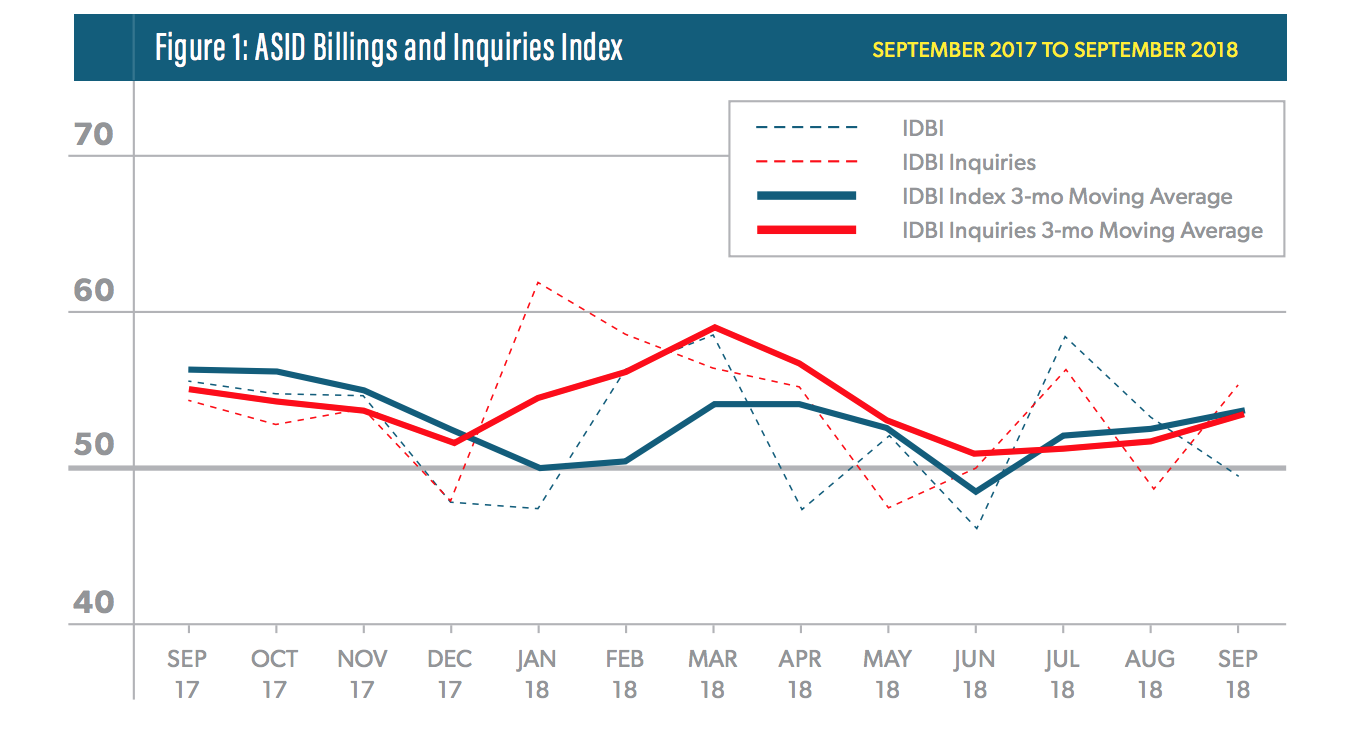After some concerns in the second quarter billings report, the American Society of Interior Designers third-quarter billings index report showed growth for the interior design industry.
The quarterly report, now in its seventh year, tracks expansion and contraction in the interior design industry, breaking it down by size of firm, location and other demographical information, and analyses the data for potential growth opportunities as well as challenges. Jack Kleinhenz, Ph.D — Principal and Chief Economist at Kleinhenz & Associates — and Susan Chung, Ph.D — Director of Research at ASID — work together to compile this information each quarter.
There's a lot to unpack with this quarterly data, so let's dive in.
Growth and challenges in the industry
Billings and inquiries peeked in March 2018, which Kleinhenz says makes sense. Most people wait until after the holidays and winter months to start home projects. Though last quarter showed some dips below the 50-mark line — 50 and above indicates expansion and below 50 represents contraction — both saw relatively positive endings in September, although the month-to-month billings index (the dotted blue line below) fell just below the 50 mark.

Not every type of firm in every region saw expansion. Small firms with 2-9 employees showed consistent growth above the 50 mark, while sole practitioner firms hit the 50 mark after being below it for six months. Firms with 10-24 employees showed growth as well, but firms with 25 grew and contracted within the quarter. In terms of region, all regions except the Northeast finished out the third quarter above the 50 mark. Kleinhenz says this is consistent with the housing market in the region.
Overall, this is positive news for the interior design industry, but Kleinhenz says a softening in the housing market could affect the industry. Rising interest rates have made it more expensive to buy a home, particularly for first-time home buyers. While the 2017 tax cut may have put more money in consumer wallets, it also eliminated some tax benefits of owning a home, which makes it more expensive. Experts aren't anticipating another housing crash. Housing construction costs have also gone up as material costs increase, and labor shortages also continue to cause problems. Both affect both new construction and renovations.
The home design industry itself is loosely tied to the housing market because new home buyers — first-timers and seasoned pros — usually purchase new furniture, lighting, appliances and tools or hiring an interior designer for their new pads.
Industry feeling mostly positive
As always, ASID asked a few bonus questions to get a read on how interior designers were feeling about their businesses. Each quarter asks a specific set of questions every year so as to give ASID trackable data.
Here are a few highlights from those questions.
- 30 percent of sole practitioners says the next three months will be a good time to expand substantially for their businesses. Last year, only 20 percent said it was a good time, so there's a slight increase there
- Summer and winter months are slow, says 38 and 34 percent of respondents respectively. Fall and spring tend to be busiest, with only 8 and 11 percent saying these months were slow. This makes sense with Kleinhenz earlier assessments.
In his closing remarks, Kleinhenz looked to the future and talked about some challenges that might be on the horizon. Inflation and tariffs may slow down spending in the new year, and the rising housing rates could also cause problems. Most experts anticipate that the economy will likely slow down next year, but as to how much that will affect the interior design industry remains to be seen.







